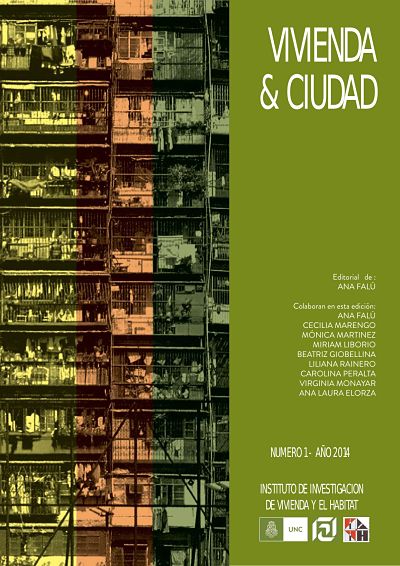Espacios públicos. Convivencia y seguridad ciudadana. ¿Dónde están seguras las mujeres?
Keywords:
Socioeconomic residential segregation, Social representations, Territorials stigmasAbstract
It is in a specific territory where the everyday lives of people unfold, where different forms of violence are inflicted upon, where the experiences of insecurity manifest, and also where women build their collective projects to transform reality in their communities, neighborhoods and cities. It is in this environment where some questions need to be contextualized: Where can women be safe? Which are the causes of insecurity, how do they manifest, which are their implications? How does women’s safety/insecurity relate to the social and territororial conditions of cities? Drawing on the experiences in the region and those of women themselves, what answers can we develop? The “gender” category as a variable accounting for violence allows for making more complex the results coming from quantitative data and challenging them, as well as for reconsidering safety/ security and territory as an intervening variable.References
BURIJOVICH, Jaschele. Informe Argentina para Observatorio Regional. Red Mujer y Habitat
(LAC). CISCSA. Recuperado de: http://www.jus.gob.ar/areas-tematicas/estadisticas-enmateria-de-criminalidad.aspx
DALMAZZO PEILLARD, M. y RAINERO, L. (2011). Una Ciudad al Alcance de las Mujeres.
Herramientas para incorporar el Género en el Ordenamiento Territorial. El caso de
Bogotá. Bogotá: Alcaldía Mayor de Bogotá, Secretaría de Planeación y
AECID.
FILARDO, Verónica (coord) Usos y apropiaciones y espacios públicos de Montevideo y clases
de edad. Montevideo: Depto Sociología. Facultad Ciencias Sociales. Universidad de la
República.
KESSLER, Gabriel (2009). El sentimiento de inseguridad: sociología del temor al delito. Buenos
Aires: Siglo XXI. Editores
ONU-Hábitat (2012). Estado de las Ciudades de América Latina y el
Caribe 2012. Rumbo a una
nueva Transición Urbana. Nairobi: Programa de las Naciones Unidas para los
Asentamientos Humanos.
RIELLA, A y VISCARDI, N. (s/f). Mapa social de la violencia en la ciudad de Montevideo. Una
aproximación a los escenarios de la violencia urbana. Consultado en:
http://www.fcs.edu.uy/archivos/09%20Riella-Viscardi.pdf
SEGOVIA, O. y MIRES, L. Boletín n° 2, Compilación y análisis. Ciudad: Observatorio Regional
Ciudades, Violencias y Genero Red M y H (LAC).
ZANOTTA MACHADO, Lia (2009), “Sin violencia hacia las mujeres serian seguras las ciudades
para todos y todas?”. En: Ana Falú (ed) Mujeres en la Ciudad. De Violencias y
Derechos. Santiago de Chile: Sur ediciones.
Downloads
Issue
Section
License
Authors who publish in this journal agree to the following terms:
a. Authors retain copyright and guarantee to the journal the right to be the first publication of the work as well as licensed under a Creative Commons Attribution-ShareAlike 4 license.
b. Authors may separately establish additional agreements for non-exclusive distribution of the version of the work published in the journal (e.g., placing it in an institutional repository or publishing it in a book), with an acknowledgement of its initial publication in this journal.
c. Authors are permitted and encouraged to disseminate their work electronically (e.g., in institutional repositories or on their own website) before and during the submission process, as this may result in productive exchanges, as well as earlier and greater citation of published work (See The Effect of Open Access).
d. 4.0 International Creative Commons Attribution-ShareAlike 4.0 License.










